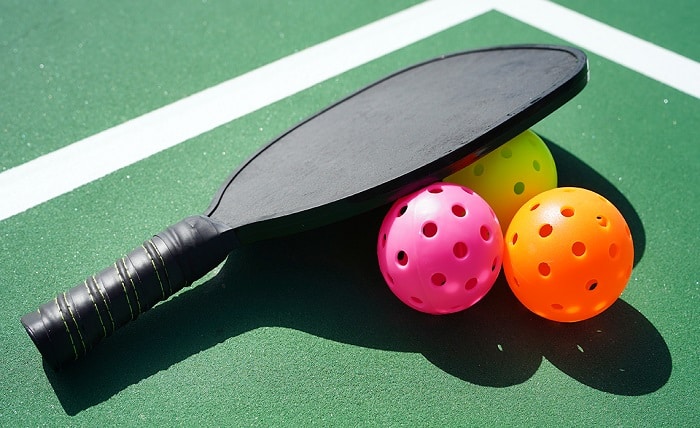Signs It’s Time to Resurface Your Pickleball Court

For pickleball enthusiasts, a well-maintained court is essential for enhancing the enjoyment of the game. Yet, even the best courts will ultimately show signs of wear, necessitating resurfacing. Recognizing the right moment for resurfacing is crucial to maintaining play quality and ensuring player safety. This post outlines the key indicators that signal it’s time to resurface your pickleball court.
Visible Wear and Tear
The most obvious sign that your pickleball court needs resurfacing is visible wear and tear.
- Cracks in the Surface: Small cracks can quickly become large fissures if not addressed. These not only affect the ball’s bounce but can also be tripping hazards for players.
- Fading Lines and Colors: Constant exposure to the sun and elements can cause the court’s lines and colors to fade, making it hard to see boundaries and affecting game play.
- Uneven Surfaces: Areas of the court may become uneven over time, due to settling or other factors. An uneven surface can affect play quality and increase the risk of injuries.
Changes in Ball Bounce
The way a ball bounces on the court can tell a lot about the court’s condition.
- Inconsistent Bounce: If the ball starts to bounce unpredictably or differently than it used to, this could indicate issues with the court’s surface flatness or texture.
- Soft Spots: Soft spots on the court can absorb the impact of the ball differently, leading to a slower, lower bounce that can disrupt the rhythm of the game.
Water Issues
Effective drainage is vital for keeping a pickleball court in excellent condition, particularly in regions with variable weather.
- Pooling Water: If water starts pooling in areas of the court after rain, it suggests that the surface may be degrading or that the drainage is no longer functioning as it should.
- Slow Drying: A court that takes longer to dry after being wet could be a sign that the surface is no longer as smooth or impermeable as it needs to be, which could lead to faster deterioration.
Player Feedback
Listening to those who use the court can provide invaluable insights into its condition.
- Complaints About Playing Conditions: Regular players are often the first to notice when the conditions of a court change. If players start commenting on the surface quality, it might be time to consider resurfacing.
- Increased Slips and Falls: An increase in slips or falls can be a clear indicator that the court’s surface has become too smooth or worn, compromising its grip and safety.
Professional Assessment
Sometimes the signs are not obvious without a professional evaluation.
- Regular Inspections: Periodic professional inspections of your pickleball court can help identify potential issues before they escalate into serious problems.
- Measuring Surface Grip and Roughness: Professionals can measure the grip and roughness of the court surface, which are critical for safe and enjoyable play.
Conclusion
Maintaining your pickleball court in excellent condition is vital for both safety and enjoyment. A well-kept court provides a superior playing surface and minimizes the risk of injuries from uneven or worn-out areas. By being vigilant about signs of wear, like cracks, fading lines, or slippery spots, and working with professionals specializing in pickleball court surfacing in Utah, you can ensure your court remains a premier facility for years. These experts offer customized solutions, from resurfacing to repainting, tailored to your court’s specific needs. Regular upkeep, such as cleaning and inspecting the surface, along with timely resurfacing, can significantly prolong your court’s lifespan and enhance the playing experience, ensuring the game remains enjoyable for everyone. Investing in these services not only safeguards your court but also boosts community engagement and player satisfaction.




